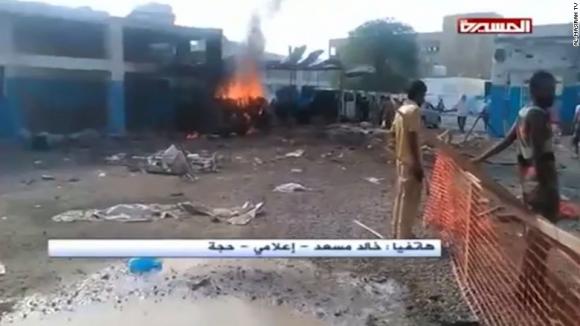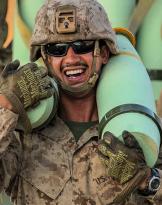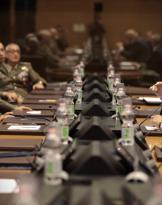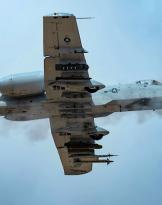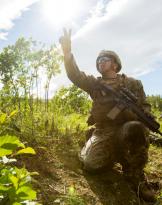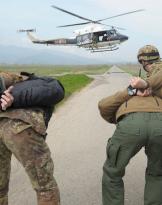The recent bombing of a hospital in Yemen (specifically, that of Abs, in the north-eastern province of Hajja, 130 km from the capital Sanaa - photo), managed by Doctors Without Borders, in which they lost their lives or were injured (some even seriously) several dozen people, raised the controversy - in reality never subsided - regarding the failure to comply with the rules of international law and international humanitarian law that prohibit the attack, in case of conflict, against schools, civil goods and, above all, health facilities.
It is disheartening, in some ways, but not surprising, that this happened despite the umpteenth and very recent United Nations resolution, issued at the 3 Security Council last May (n. 2286 of the 2016) precisely following the growing number of similar episodes over the past few years (“Deeply concerned despite of these obligations, acts of violence, attacks and threats against medical personnel and humanitarian personnel exclusively engaged in medical duties, as well as hospitals and other medical facilities, are being perpetrated").
Recalling - among other things - precisely the four Geneva Conventions of 1949 and their Additional Protocols of 1977 and 2005, it reiterated the total protection enjoyed by health posts and staff employed for care and assistance of the wounded ("... as well as relevant customary law with the protection of wounded and sick, medical personnel and humanitarian personnel exclusively engaged in medical duties, their means of transport and equipment, as well as hospitals and other medical facilities, armed conflict to respect and ensure respect for international humanitarian law") And the classification among the war crimes of the relative behaviors carried out in violation of the aforesaid Conventions (" ... Recalling that, under international law, attacks intentionally directed against hospitals and places where sick and wounded are collected, provided that they conventions in conformity with international law are war crimes ").
However, it cannot be overlooked that in this resolution reference is always made to one of the requirements that guarantee - or should serve to guarantee - the aforementioned "immunity": that is, the aforementioned structures and the relative personnel employed exclusively for the aforementioned activity (care and assistance of the wounded and the sick: "...exclusively engaged in medical duties" or again "recalling that is not compelled to perform or to carry out medical work or other medical rules designed to benefit from the wounded and the sick": See the considerations already made in this regard on this publication at link), as well as the display of the "ad hoc" distinctive signs foreseen by the aforementioned Conventions (... "recalling Conventions of 1949 and where applicable, their Additional Protocols").
Contents, those reported in the resolution in question, which should by now be taken for granted, also due to the ever increasing diffusion that, in recent years, has characterized international humanitarian law, in all areas (military and otherwise), but which, evidently , continues to be often ignored because - to the point - it is often interpreted for the use and consumption of the strongest or most convenient situations to "marry" at a given historical and political moment.
Net of all these considerations, the figure emerged from the last annual report (December 2015) of the same UN Secretary-General on children in armed conflicts that he documented beyond 1.500 episodes of attacks or use for military purposes of schools and hospitals in 2014 only. In particular, it emerged that:
-
163 schools and 38 health facilities have been affected in Afghanistan
-
28 hospitals and 50 schools have been bombed and other 9 schools set up for military purposes in Syria
-
92 schools were occupied by soldiers and fighters in Yemen
-
7 attacks and 60 military occupations of schools occurred in South Sudan
-
543 episodes of attacks on schools in Palestine and 3 school buildings in Israel have been documented.
-
in the North-East of Nigeria 338 schools were destroyed or damaged between the 2012 and the 2014.
It would be hoped that what was hoped for by the resolution itself mentioned above will not remain unanswered, when it calls on states to prosecute and punish perpetrators of violations of the rules of international humanitarian law (and of the same national law of belonging: "urging States to ensure that violations of international humanitarian law, medical personnel and humanitarian personnel, and the provision of medical and humanitarian personnel. remain unpunished, affirming States need to ensure that those responsible do not work with impunity, and that they are the ones who have brought justice, provided for national laws and obligations under international law"): This would presuppose, from time to time, the establishment of impartial commissions of inquiry, aimed at ascertaining the carrying out of the incriminated facts and the relative responsibilities, because if it is true that sometimes the bombardments in question can result from the error , other times they can be intentional, to hit targets that, apparently civilians or, as in this case, for sanitary use, are however used as hiding place or shield by terrorists and / or opposing fighters, as shown also by the above data.
(image: Al Masirah TV)

